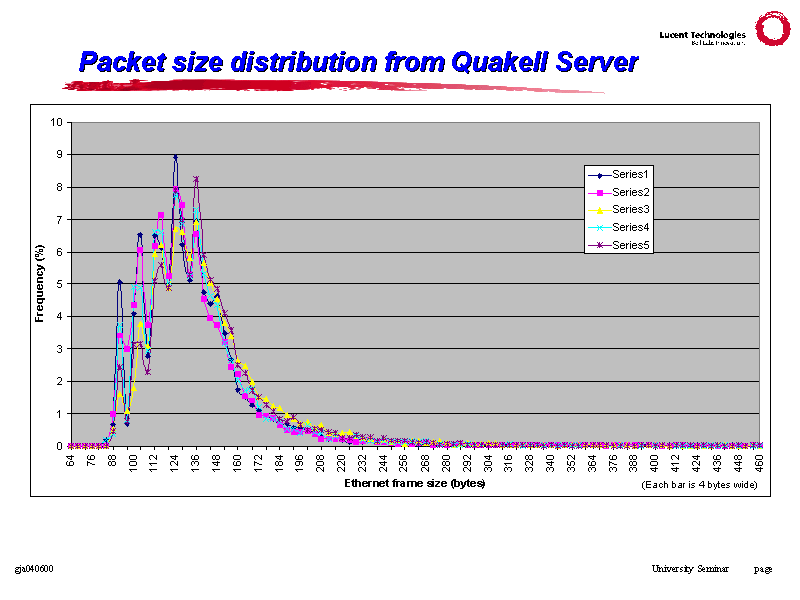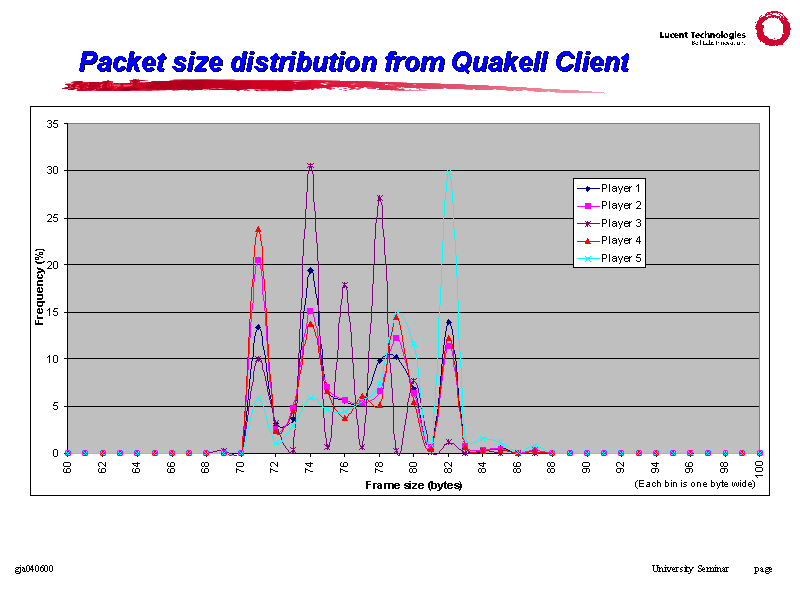
Figure
1 Server to Client [*]
(click
on image for fullsize version)
Snapshot of QuakeII Ethernet Frame Sizes

Figure
1 Server to Client [*]
(click
on image for fullsize version)
Figure 1 shows the intra-game distribution of frame sizes in traffic from the server to a client (each 'series' covers consecutive 11 minute, roughly 7000 sample, periods). During map changes at the end of each game, and when a client first joins a server, there is a small number of larger frames. However, these do not occur during the time-sensitive (interactive) phases of the game, and so are not particularly interesting from a QoS-management perspective. The vast majority of franes range from 80 bytes to 230-240 bytes. Scatter plots of frame size versus time (not shown) confirm that intra-game frame size distribution is relatively consistent even over sub-minute intervals (if the player is actively running around and 'doing things'). This would influence downstream traffic on the dial-up/DSL/Cablemodem link of an online QuakeII player playing from home. It would also influence the upstream traffic going out over the link if an externally-accessible QuakeII server was being hosted in a home.

Figure
2 Client to Server [*]
(click
on image for fullsize version)
Figure 2 shows the ethernet frame sizes of traffic originating from five different players towards the server (over a 14 minute period, with 20000 to 30000 samples for each player). This would influence upstream traffic on the dial-up/DSL/Cablemodem link of an online QuakeII player playing from home The key point is that frame sizes appear quite constrained to between 68 and 88 bytes. (I didn't investigate why the histograms are shaped differently between the players.)
So, there it is (for what it is worth) - client and server side frame size distributions for QuakeII using regular maps. The actual IP packet sizes will be 14 bytes shorter (an ethernet frame's overhead). You might use this information to determine how much buffering to use on the upstream and/or downstream sides of a DSL or Cablemodem that runs separate queues for game traffic and regular IP traffic. Or not.
[*] These results were publicly presented in talks I gave at Melbourne University and Monash University in April 2000 while with Bell Labs.
Grenville
Armitage, 4/6/00